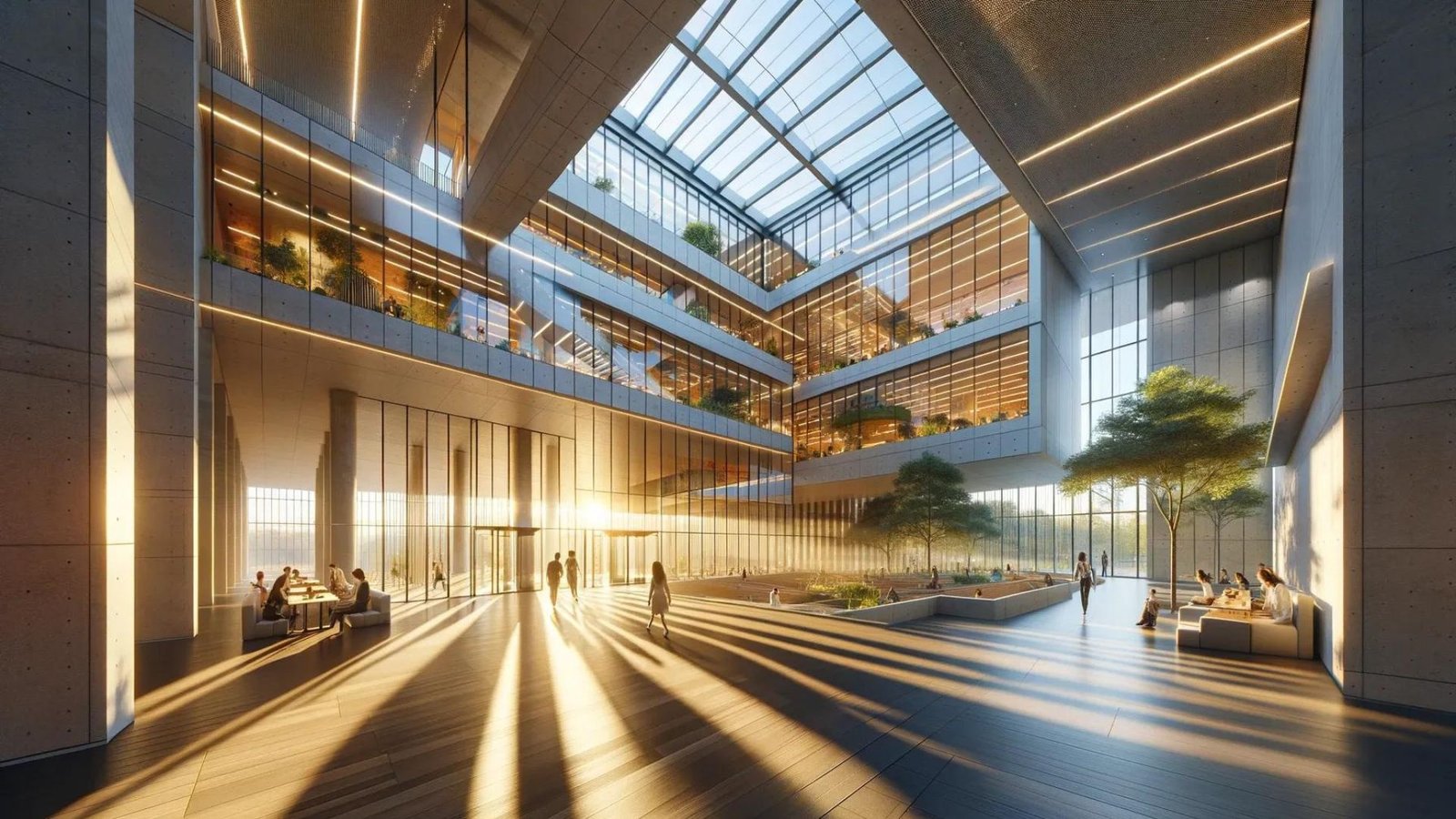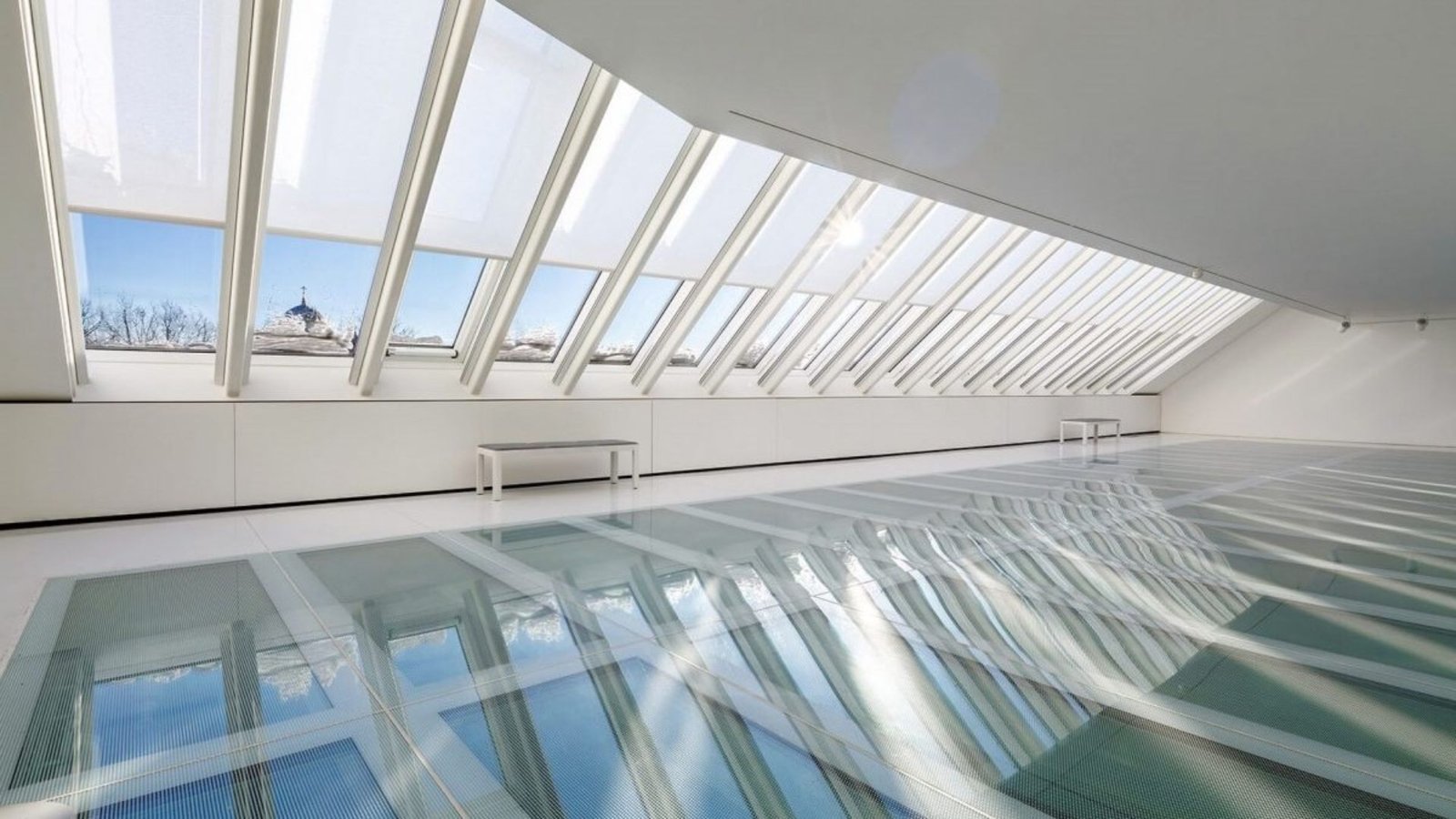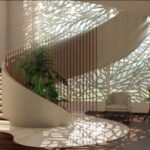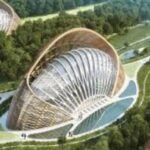Tips for Optimizing Natural Lighting in Architecture
Natural lighting is not just about illuminating spaces; it’s about creating a harmonious and energy-efficient environment. Properly harnessing natural light in architectural design can improve occupant well-being, reduce energy consumption, and highlight architectural features. Here’s how architects can effectively optimize natural lighting in their designs.
1. Understanding the Sun’s Path and Orientation
Begin by understanding the sun’s path throughout the day and across seasons to determine optimal building orientation and placement of openings for maximum daylight penetration.

2. Strategic Placement of Windows and Openings
Place windows strategically to capture natural light from different angles throughout the day while minimizing glare and heat gain, depending on the building’s orientation.
3. Utilizing Light Shelves and Reflective Surfaces
Install light shelves or reflective surfaces above windows to bounce natural light deeper into the interior space, enhancing daylight distribution and reducing the need for artificial lighting.
4. Designing Atriums and Skylights
Incorporate atriums, courtyards, or skylights to introduce natural light into deeper areas of the building, creating visual connections and enhancing the overall daylighting experience.
5. Choosing Glazing Materials and Specifications
Select glazing materials with appropriate solar heat gain coefficients (SHGC) and visible light transmittance (VLT) values to control heat gain and maximize daylight penetration without compromising thermal comfort.
6. Optimizing Interior Layout for Daylight Penetration
Design interior spaces with open floor plans and minimal obstructions to allow natural light to penetrate deeper into the building. Hence, enhancing visual comfort and reducing reliance on artificial lighting.
7. Daylighting Control Systems
Implement daylighting control systems such as automated blinds or louvers to regulate light levels and minimize glare during peak sunlight hours, ensuring optimal visual comfort.
8. Light Diffusion Techniques
Use diffusing materials or textures on windows and interior surfaces to scatter natural light evenly throughout the space, reducing harsh shadows and enhancing overall lighting quality.
9. Light-colored Finishes and Reflective Materials
Choose light-colored finishes and reflective materials for interior surfaces to bounce and amplify natural light. Therefore, creating a bright and inviting atmosphere within the building.
10. Solar Tubes and Light Pipes
Integrate solar tubes or light pipes to channel natural light from the roof to interior spaces that lack direct access to windows. Hence, maximizing daylighting efficiency in all areas of the building.
11. Seasonal Considerations and Adaptability
Design for seasonal variations in daylight availability by incorporating adjustable shading devices or adaptable interior layouts that optimize natural light throughout the year.
12. Biophilic Design and Connection to Nature
Incorporate biophilic design principles by integrating views of nature and natural elements into the built environment. Therefore, enhancing occupant well-being and connection to the outdoors.
13. Energy Efficiency and Sustainable Design
Combine natural lighting strategies with energy-efficient lighting fixtures and controls to reduce overall energy consumption and environmental impact while enhancing visual comfort.
14. Occupant Comfort and Productivity
Promote occupant comfort, productivity, and well-being by providing access to natural light, which has been shown to positively impact mood, health, and overall satisfaction.
15. Continuous Evaluation and Optimization
Conduct post-occupancy evaluations and monitor daylighting performance to identify opportunities for further optimization and ensure the long-term effectiveness of natural lighting strategies.
16. Sustainable Design Practices
Incorporate sustainable design practices such as using locally sourced materials and promoting energy-efficient building systems. Natural lighting complements green building certifications by reducing environmental impact.
17. Enhancing Visual Comfort and Safety
Ensure adequate natural lighting to enhance visual comfort and safety, reducing the reliance on artificial lighting during daytime hours. Well-lit spaces also improve wayfinding and navigation within buildings.
Conclusion
Optimizing natural lighting in architecture is not only about reducing energy use but also about creating healthier and more comfortable indoor environments. By integrating thoughtful design strategies such as strategic window placement, light diffusion techniques, and daylighting control systems, architects can enhance both the aesthetic and functional aspects of buildings. Embracing natural light not only benefits occupants but also contributes to sustainable building practices and environmental stewardship in architectural design.



